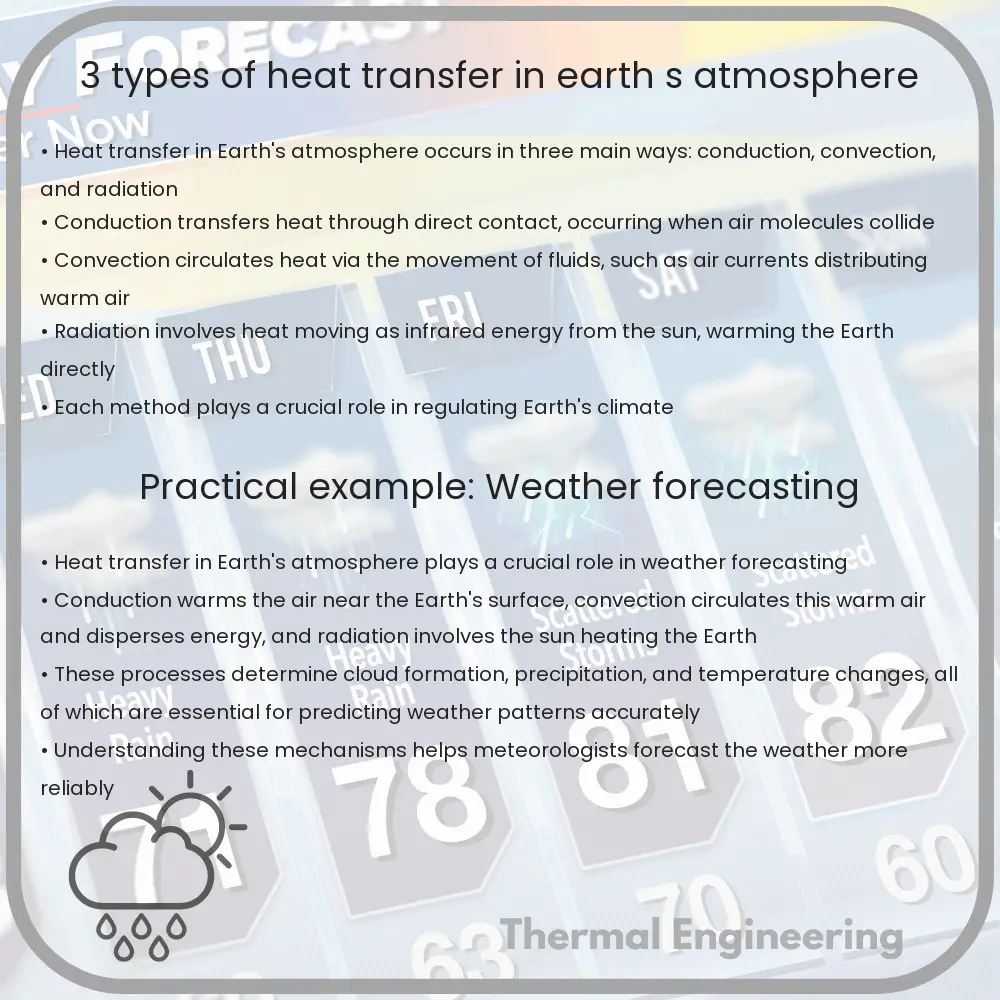Learn about the three main types of heat transfer—conduction, convection, and radiation—and their impact on Earth’s atmosphere and climate.

Understanding the Three Types of Heat Transfer in Earth’s Atmosphere
Heat transfer plays a crucial role in shaping the weather patterns and climate of Earth. It involves the movement of thermal energy from one place to another and occurs in three fundamental ways: conduction, convection, and radiation. By examining these mechanisms, we can gain a deeper understanding of atmospheric processes and their effects on our environment.
1. Conduction
Conduction is the process of heat transfer through a material without the actual movement of the substance. In the Earth’s atmosphere, this form of heat transfer is less significant compared to the others, as air is a poor conductor of heat. However, conduction is critical near the surface of the Earth where the ground absorbs heat during the day and releases it at night. This transfer of heat affects the immediate layer of air in contact with the ground, primarily influencing temperature variations and microclimates close to the surface.
2. Convection
Convection refers to heat transfer through fluids (liquids or gases) driven by the movement of the fluid itself. In the atmosphere, convection is primarily responsible for the vertical movement of air. Warm air near the Earth’s surface becomes less dense and rises, while cooler air sinks, creating convection currents. This mechanism is a primary driver for various weather phenomena, including the formation of clouds, storms, and the general circulation of the atmosphere. An example of a convection current can be seen when warm air rises from a hot surface, cools as it gains altitude, condenses into clouds, and eventually precipitates as rain.
3. Radiation
Radiation is the transfer of heat in the form of electromagnetic waves. This type of heat transfer does not require a medium (like air or water) and can occur in a vacuum. Solar radiation is the most prominent form of radiative heat transfer affecting Earth’s atmosphere. The sun emits radiation, primarily in the form of visible light and ultraviolet rays, which travel through space and are absorbed, reflected, or transmitted by the Earth’s atmosphere and surface. Infrared radiation, or heat, is then emitted by the Earth’s surface and atmosphere. Greenhouse gases in the atmosphere absorb and re-emit infrared radiation, warming the Earth through the greenhouse effect.
Conclusion
The three types of heat transfer — conduction, convection, and radiation — work simultaneously to regulate the Earth’s atmosphere and influence our daily weather and long-term climate. Each type plays a distinct role, from the ground-level temperature changes driven by conduction, to the formation of major weather systems through convection, and the global energy balance maintained by radiation. Understanding these processes helps scientists predict weather patterns, study climate change, and devise strategies for mitigating adverse environmental effects.